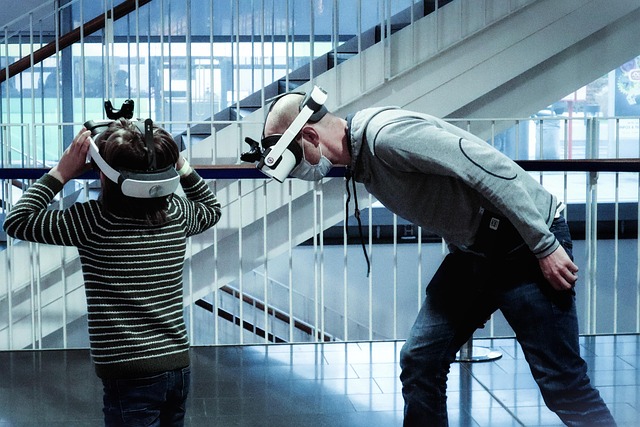In the ever-evolving landscape of technology, the integration of spatial audio has emerged as a transformative force in the realms of virtual reality (VR), augmented reality (AR), and the metaverse. This innovative auditory experience is reshaping how we interact with software, creating immersive environments that engage our senses like never before.
Imagine slipping on your VR headset and being instantly transported to a bustling cityscape. The clatter of distant footsteps, the chatter of passersby, and the honking of vehicles surround you, all expertly positioned in a three-dimensional sound space. This is the magic of spatial audio—it goes beyond mere sound effects, offering a rich, layered auditory experience that mirrors reality.
In the world of augmented reality, spatial audio plays a pivotal role in enhancing our interaction with digital elements layered over our physical environment. Picture a scenario where you’re walking through your living room and receive a virtual notification from your favorite app. With spatial audio, the sound can originate from the direction of the virtual object, creating an intuitive interaction that feels organic rather than jarring. This seamless integration fosters a deeper connection between the digital and physical worlds.
As we venture into the metaverse—an expansive digital universe where users interact with each other and a plethora of environments—spatial audio acts as the glue that holds the entire experience together. Users can attend virtual events, explore immersive landscapes, or engage in social interactions, all enhanced by the power of sound. The ability to localize audio sources gives users cues that are critical in navigating these complex virtual spaces, making experiences more enjoyable and engaging. The voices of friends who are miles away can sound as though they are right beside you, emphasizing the importance of proximity and creating a sense of belonging in a virtual community.
Furthermore, the implications of spatial audio extend beyond mere entertainment. In education, for example, imagine a virtual classroom where the instructor’s voice projects from their digital avatar, creating a spatial relationship that mimics a physical classroom. Such an advance can significantly enhance learning outcomes, making lessons more engaging and interactive. In training simulations, spatial audio can aid in teaching complex tasks by providing auditory feedback and instructions that guide users through each step while immersed in a realistic environment.
As software developers hone their skills in spatial audio technologies, the future looks bright. By combining sophisticated software algorithms with cutting-edge hardware, we can expect even greater fidelity and responsiveness in audio experiences. Innovations will stem from collaborations across various sectors—gaming, education, healthcare, and beyond—resulting in unique applications that drive user engagement and satisfaction.
Adopting spatial audio into our daily digital experiences addresses a fundamental human desire for connection and presence. As we navigate the possibilities of virtual reality, augmented reality, and the metaverse, the auditory landscape is an essential component that enhances our interactions and enriches our experiences. With each advancement in spatial audio, we edge closer to a more integrated and immersive digital experience, transforming the way we perceive and engage with our software and the world around us.




